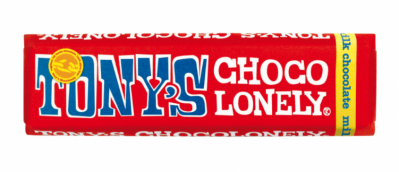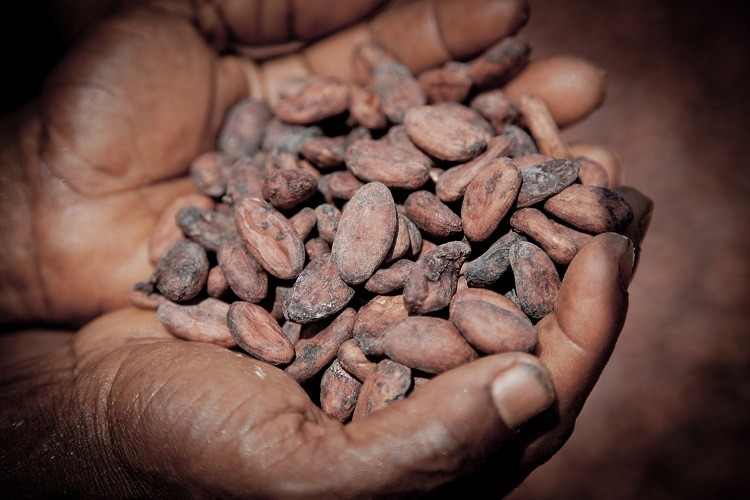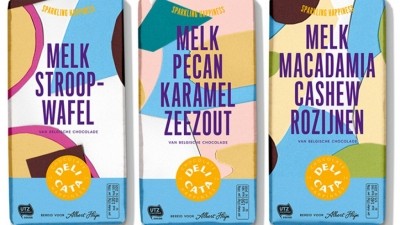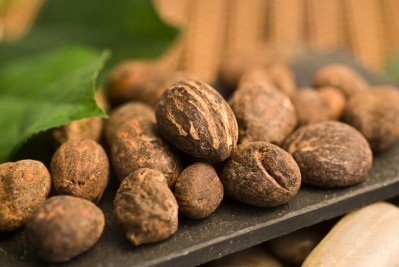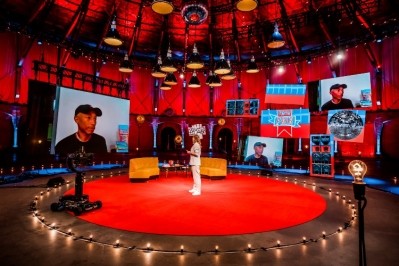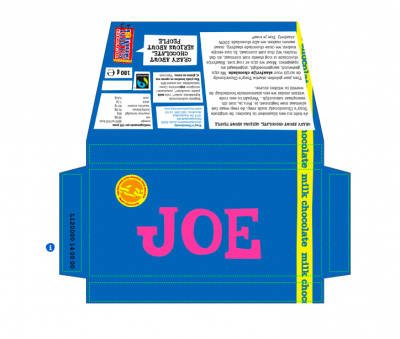How Tony’s Chocolonely plans to disrupt ‘the big seven’ in chocolate
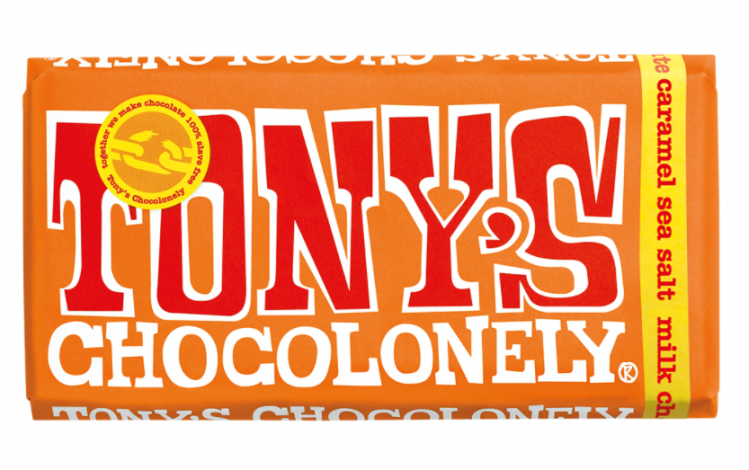
Tony’s Chocolonely was founded fifteen years ago by an investigative journalists in the Netherlands. Since that time, the brand has expanded into 20 countries – with a physical presence in four – and currently boasts the title of ‘biggest chocolate brand’ in Holland.
Unlike the majority of chocolate brands one may find on shelf, however, Tony’s Chocolonely does not identify as a chocolate maker first-and-foremost.
Rather, the challenger brand says it is on a journey to eradicate child slavery in chocolate. “We’re an impact company that makes chocolate, we’re not a chocolate company that wants to make an impact,” said UK and Ireland Country Manager Ben Greensmith.
Addressing ‘the bitter truth’ about chocolate
Approximately 60% of the world’s cocoa is produced in just two countries: Ghana and Côte d’Ivoire in West Africa. And the majority of this cocoa – a principle ingredient in the production of chocolate – is produced by smallholder farmers.
These smallholders, Greensmith told delegates at start-up event Bread & Jam last week, are underpaid: “The average farmer in West Africa earns about 70c a day.”
Without the means to hire workers, farmers regularly recruit minors. This is ‘the bitter truth’ about chocolate: of the 2.3m children working on cocoa plantations in Ghana and Côte d’Ivoire, Greensmith estimates 2.1m are working illegally.
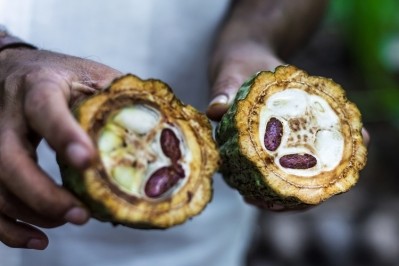
“In the worst cases, 30,000 children are sold and trafficked as slaves [according to the Global Slavery Index]…they’re effectively held against their will…There is so much suffering at the beginning of the value chain.”
Greensmith blames these farmers’ low wages on ‘massive structural issues’ within the chocolate sector. The ‘problem lies’, he explained, in the ‘seven big brands and chocolate producers’ in the middle of the value chain. These players include producers Barry Callebaut and Cargill, and big brands and brand-owners Mondelēz, Mars, Nestlé, Hershey, and Lindt.
“That’s where all the power sits,” the country director stressed. “They keep the price of cocoa as low as possible, so they can make as much money as possible.”
At the same time, the demand for chocolate is quite obviously there. In the UK alone, consumers eat approximately eight kilograms of chocolate per year.
Yet according to Greensmith, consumers are largely unaware of the inequality present within the product. “No one really thinks about where it comes from.”
A PR stunt gone right
In an effort to turn the tide on child slavery in chocolate, investigative journalist Turn van der Kerken – together with two colleagues – launched Tony’s Chocolonely back in 2005.
Turn (translated to ‘Tony’ in English) intended to make a media buzz when he first commissioned a batch of 5,000 chocolate bars, made from 100% slave-free cocoa, as a PR stunt. The aim was to ‘shout and scream’ about the unequal nature of the cocoa industry, Greensmith recalled. The bars sold out ‘within a matter of hours’, indicating real demand for slave-free chocolate.
Tony’s Chocolonely has been scaling up ever since, with the objective to grow by 50% year-on-year. Of course, had the intention from the get-go been to create a global chocolate company, the country director suspects some more thought would have gone into the brand name itself. While the name hints at Tony’s (Turn’s) ‘lonely battle’ to change the cocoa industry, Greensmith admits it’s ‘too much of a mouthful’.
The Tony’s Chocolonely recipe
So how does Tony’s Chocolonely address this ‘bitter truth’ in cocoa to produce 100% slave-free chocolate? It starts with sourcing 100% traceable cocoa from West Africa, which can be tracked and traced throughout the value chain.
The company does not subscribe to mass balance cocoa – which ensures that the amount of cocoa purchased equals the amount of certified outputs sold. When a business buys Fairtrade mass balance cocoa, for example, it does not mean that those particular beans are Fairtrade.
For Tony’s Chocolonely, mass balance Fairtrade cocoa ‘isn’t good enough’. “We want to know that if we’re going to stick our name on the wrapper…we know where those beans have come from,” said Greensmith.
Secondly, the brand ensures it pays its cocoa farmers a fair price. Beginning with the farmgate price, which sits at around $1,000 per ton, Tony’s Chocolonely adds on the Fairtrade Premium of $240 per ton. “That’s a good start, but for us, it doesn’t go far enough,” said the country director. A further ‘Tony’s Premium’, (around $370 in the Ivory Coast and £230 in Ghana) per ton, is added on top, which Greensmith said enables the farmers to earn a living wage.
The ‘Tony’s Premium’ benefits the close-to 7,000 farmers it works with across four co-operatives in Côte d’Ivoire and three in Ghana. The supply contracts are set at five-years, which aims to help the smallholders ‘plan’ and ‘invest in their farms’ for the long-term. “We also work with them to improve their productivity and decrease their dependency on cocoa,” he said.
‘Inspiring change’
Tony’s Chocolonely work does not end with its finished product, however. Harping back to its mission to be an ‘impact company that makes chocolate’, rather than the other way around, the business has three key missions: to create awareness, lead by example, and inspire change in others.
Indeed, as strategic consultancy eatbigfish put it earlier this year during FoodNavigator’s Unlocking Innovation webinar series, Tony’s Chocolonely’s unique selling point is not in fact the chocolate itself. Rather, the challenger brand draws attention to inequality in the cocoa supply chain through its use of ingredients, packaging, and product formulation.
“Tony’s has a fantastic chocolate product, but it hasn’t revolutionised chocolate from a flavour perspective, nor from a functional perspective,” said strategy director Nick Geoghegan. “[However] they’ve been able to create a new narrative in the category.”
Building awareness is a big part of this narrative. In the Netherlands, survey results reveal that around 70% of consumers are aware of the unequal nature of the cocoa supply chain. In the UK, however, just 30% have the same kind of awareness. “We want everyone to be aware,” said Greensmith, “because only then can you make an informed choice about what you’re putting in your basket.”
Leading by example is also key for the brand. Tony’s Chocolonely has listed its five sourcing principles (traceable cocoa beans, a higher price, strong farmers, the long term, and better quality & productivity) in ‘Tony’s Open Chain’. The company hopes others will follow its lead and incorporate these principles into their own cocoa supply chains.
Some already have. Dutch supermarket retailer Albert Heijn incorporated Tony’s Open Chain principles into its own Delicata chocolate brand operations in 2018. Two new partners are expected to be announced in the coming weeks.
The third way Tony’s Chocolonely is creating change is by inspiring others to act. “We want to inspire change from the big chocolate companies, but we can’t do this alone,” said Greensmith. “We might be the biggest chocolate brand in Holland right now, but we still account for [just] 0.2% of all the cocoa that is traded in the world.”
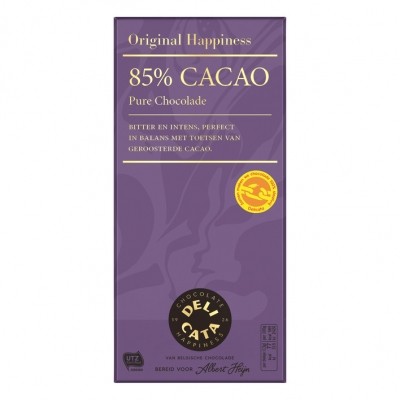
Inspiring change in others means encouraging consumers to ‘vote with their wallets’ and promoting due diligence legislation worldwide. “It might be that we have to grow to such an extent that the big chocolate companies can’t ignore us. But ultimately, we want to get everyone around a table to have the conversation, to change industry for the better.”
The country director added: “Only through doing those things can we make chocolate 100% slave-free.”
What’s next for Tony’s Chocolonely?
As the number one chocolate brand in the Netherlands – Tony’s Chocolonely Milk Chocolate Caramel Sea Salt outperforms the next best-selling bar (Tony’s Chocolonely Milk Chocolate) two-to-one – it would seem the challenger brand had already made major steps towards disrupting the chocolate industry.
Tony’s Chocolonely has an aggressive and transparent growth strategy. Aiming to grow globally by 50% every year, the business must make 40% gross margin with a 4% operating profit to ‘do what it does’, the country director explained.
Multiple revenue streams help the business achieve these targets. This year alone, Tony’s Chocolonely will bring in around €8m from its personalised wrappers businesses – whereby businesses pay to put their branding on the chocolate packaging for employees or clients. Approximately €6.4m of that comes from the B2B sector, Greensmith revealed, adding that the service is launching in the UK next month.
Last year, the privately-owned company took investment from Verlinvest – the investment vehicle of the Belgian family shareholder of AB-InBev – and JamJar, the private equity fund of the founders of Innocent Drinks.
The funding represents an important step in the company’s expansion plans. By selling a minority stake of the business, Tony’s Chocolonely is now able to focus more heavily on expansion – both within the Netherlands and abroad, Greensmith explained.
The brand has plans to build a factory to the north of Amsterdam in Zaandam, which will double as a visitor’s centre. Tony’s Chocolonely hopes to welcome 500,000 guests annually, where they can learn more about the inequality of the chocolate industry. It is expected the factory to open within the next three to four years.
